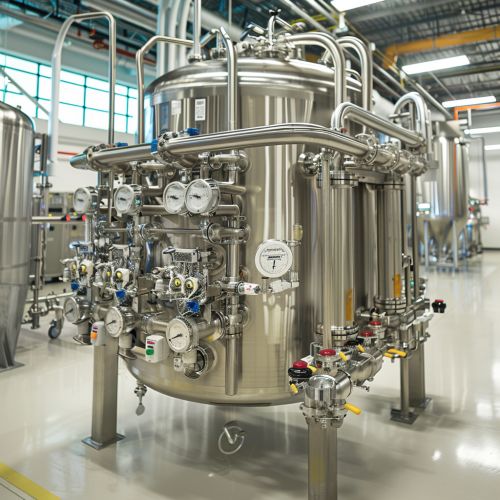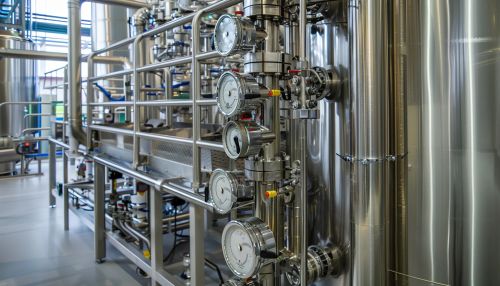Bio-manufacturing
Introduction
Bio-manufacturing, also known as biological manufacturing, is a branch of biotechnology that involves the use of biological systems, often genetically engineered, to produce commercially valuable biomaterials and bio-chemicals. This field is a subset of industrial biotechnology and is often used interchangeably with the term 'bioprocess engineering'.


History
The history of bio-manufacturing is intertwined with the development of biotechnology itself. The first instances of bio-manufacturing can be traced back to the ancient times when people used yeast, a type of microorganism, for brewing beer and baking bread. However, the modern field of bio-manufacturing emerged in the late 20th century, following advances in genetic engineering and molecular biology.
Principles
Bio-manufacturing involves the use of living cells, such as bacteria, yeast, insect, plant, or mammalian cells, to produce desired products. These cells are often genetically modified to optimize the production of the desired product. The process of bio-manufacturing typically involves the following steps:
- Genetic engineering of the cells to produce the desired product.
- Cultivation of the cells in a controlled environment, known as a bioreactor.
- Extraction and purification of the product from the cells or the culture medium.
Applications
Bio-manufacturing has a wide range of applications in various industries, including pharmaceuticals, food and beverages, agriculture, and chemicals.
Pharmaceuticals
In the pharmaceutical industry, bio-manufacturing is used to produce a variety of bio-therapeutics, such as monoclonal antibodies, vaccines, and recombinant proteins. These bio-therapeutics are used to treat a wide range of diseases, including cancer, autoimmune diseases, and infectious diseases.
Food and Beverages
In the food and beverage industry, bio-manufacturing is used to produce enzymes, flavors, and other food additives. For example, the enzyme rennet, which is used in cheese making, is traditionally obtained from the stomach of calves. However, bio-manufacturing allows for the production of a recombinant version of rennet, known as chymosin, using genetically engineered bacteria.
Agriculture
In agriculture, bio-manufacturing is used to produce bio-pesticides, bio-fertilizers, and genetically modified crops. Bio-pesticides and bio-fertilizers are often preferred over their chemical counterparts due to their environmental friendliness and sustainability. Genetically modified crops, on the other hand, are engineered to exhibit desirable traits, such as resistance to pests and diseases, tolerance to harsh environmental conditions, and improved nutritional content.
Chemicals
In the chemical industry, bio-manufacturing is used to produce bio-based chemicals, such as bio-plastics, bio-fuels, and bio-surfactants. These bio-based chemicals are often considered more sustainable and environmentally friendly than their petroleum-based counterparts.
Challenges and Future Directions
Despite its numerous applications and benefits, bio-manufacturing also faces several challenges. These include the high cost of production, regulatory hurdles, public perception of genetically modified organisms, and technical challenges related to the scalability and reproducibility of the bio-manufacturing processes.
Looking forward, advancements in synthetic biology, systems biology, and bioinformatics are expected to drive the future development of bio-manufacturing. These advancements could potentially lead to the production of more complex and valuable bio-products, the development of more efficient and robust bio-manufacturing processes, and the expansion of bio-manufacturing to new industries.
